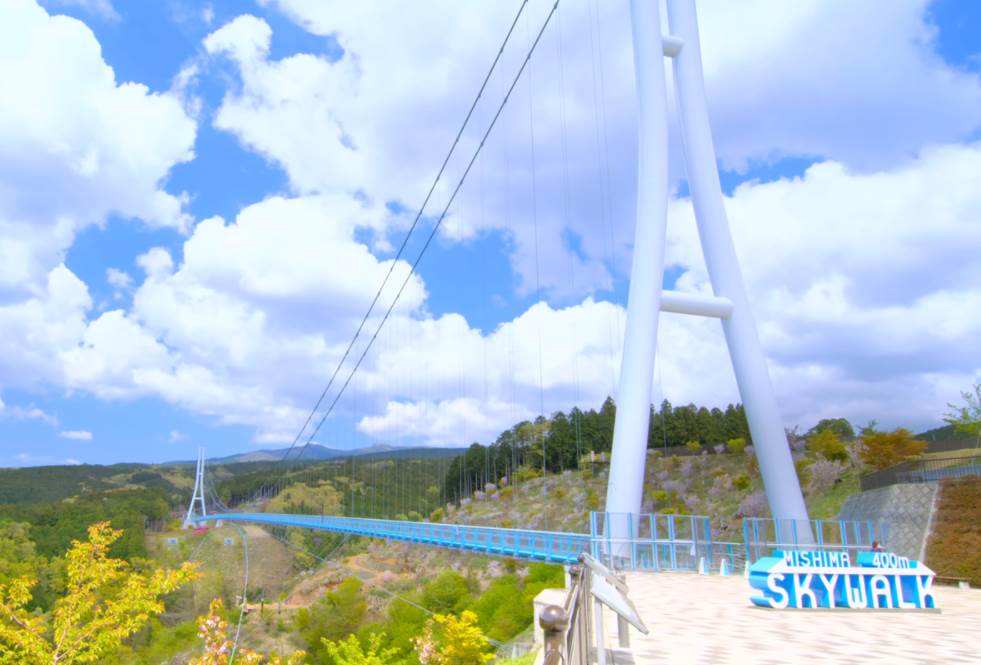An island country like Japan requires an intricate network of bridges to connect the various most populated islands. This has resulted in some of the most amazing bridges on the planet.
Even though Tokyo is the largest metropolitan area in the world, not all these magnificent structures are located here. We also included some historic bridges in this list with some of the most famous bridges in Japan.
Related: Check out some of the most famous bridges in South Korea.
1. Akashi-Kaikyo Bridge
The Akashi-Kaikyo Bridge is a huge suspension bridge that connects the cities of Kobe and Osaka, cities that are part of one of the most populous metropolitan areas in Japan on the island of Honshu, with the small town of Iwaya on Awaji Island. It spans the busy Akashi Strait.
The bridge is remarkable for having the longest main span of any bridge in the world with a length of 1,991 meters (6,532 feet) and has held this record since its completion in 1998. To give some reference to this number, the Golden Gate Bridge has a main span of 1,280 meters (4,199.5 feet) which is significantly shorter.
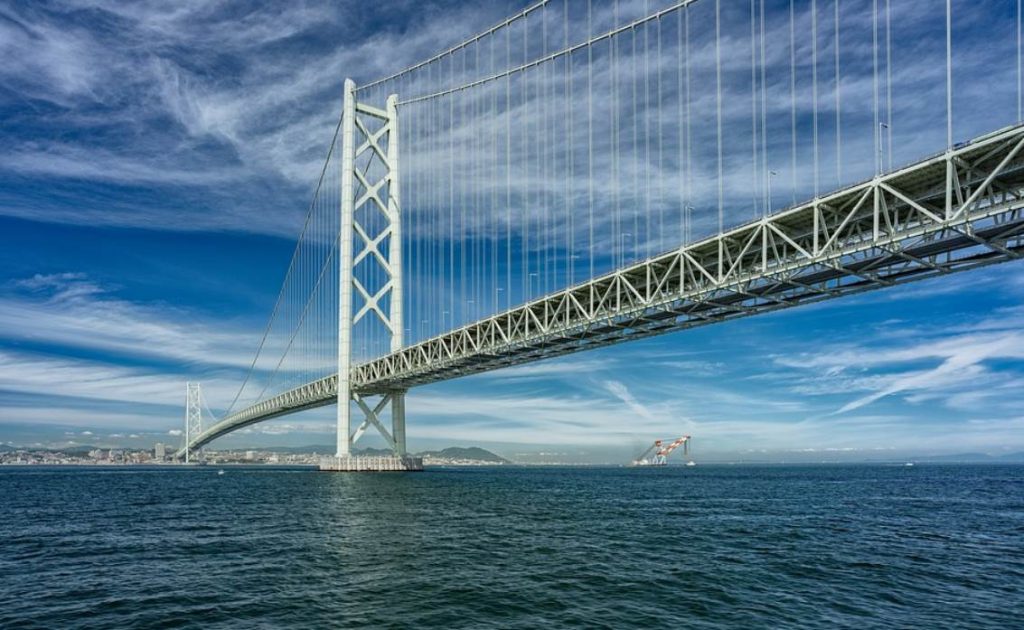
2. Kintai Bridge
The Kintai Bridge is a wooden arch bridge that spans the Nishiki River in the city of Iwakuni which is part of the Yamaguchi prefecture. The historic bridge was built in the late 17th century and leads up to the foot of the Yokohama Hill on which Iwakuni Castle is located.
The bridge in combination with the castle is a popular tourist attraction in Japan, especially during the Cherry blossom festival. The bridge isn’t the original one as it has been rebuilt quite a few times following its destruction by typhoons. The bridge features 5 spans and was declared a national treasure of Japan in 1922.
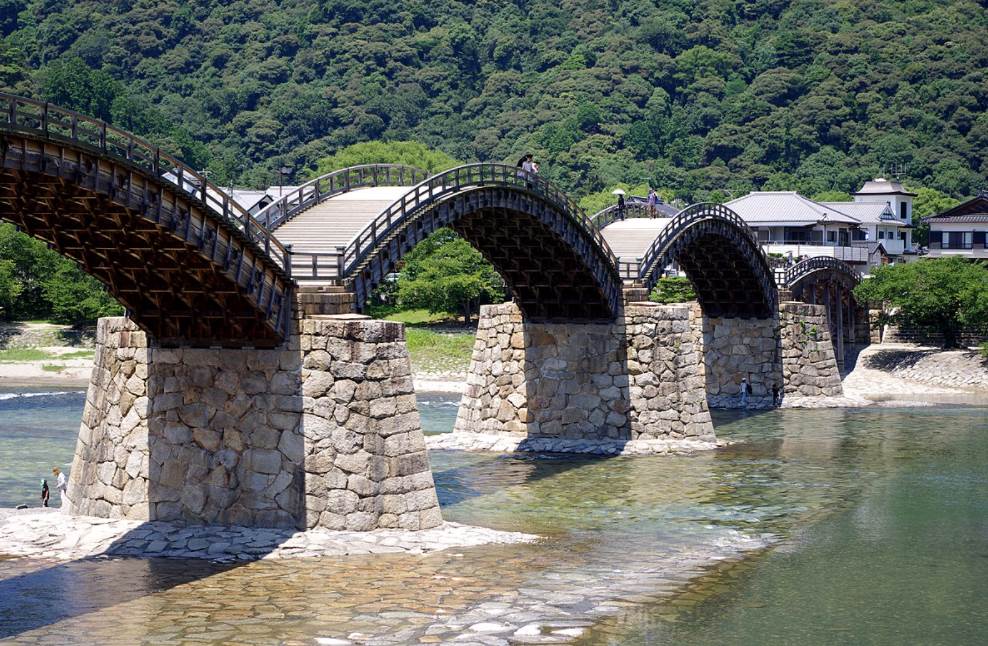
3. Rainbow Bridge
The Rainbow Bridge is a suspension bridge that spans Tokyo Bay just south of the historical heart of the city. It connects Odaiba, an artificial island, with Minato City, one of the many special wards in the enormous city of Tokyo.
As the name of the bridge suggests, it’s famous for its illumination at night. This turns the bridge into one of the most fascinating landmarks in the heart of the city. The bridge was completed between 1987 and 1993 and its central location in Japan’s capital makes it one of the busiest bridges in the country.
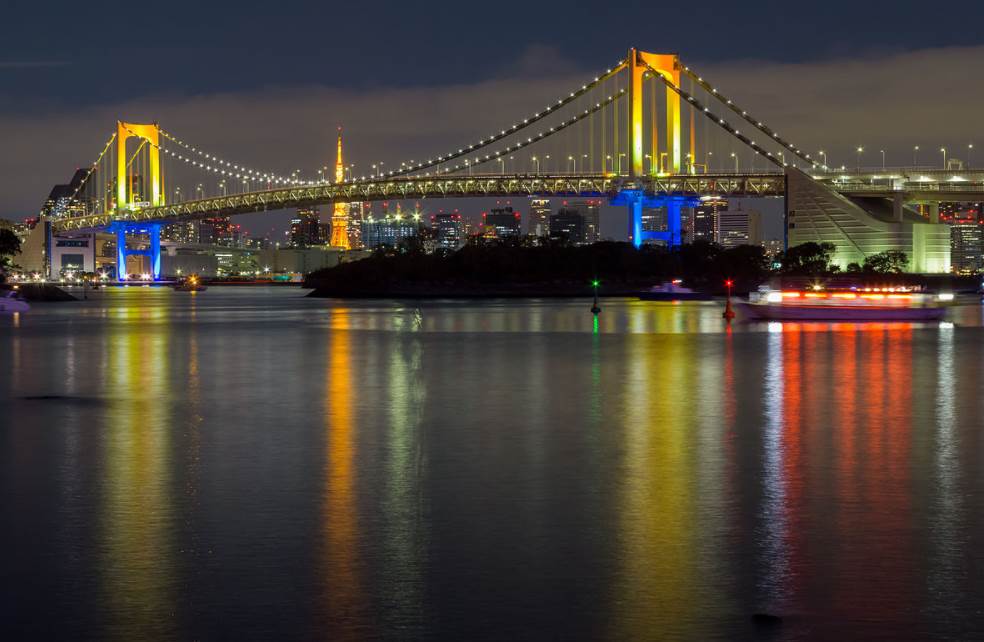
4. Eshima Ohashi Bridge
The Eshima Ohashi Bridge spans Nakaumi Lake in the southwestern part of Honshu. It’s a rigid-frame bridge, a type of bridge in which the superstructure and substructure are rigidly connected. It’s the largest bridge of its kind in Japan with a total length of 1.7 kilometers (1.1 miles) and the third-largest rigid-frame bridge in the world.
This is not the only reason why this particular structure made it to our list of the most famous bridges in Japan. The incline of the bridge looks extremely steep when photographed from a certain angle, but in reality, the bridge is only 44.7 meters (147 feet), and the maximum gradient is just 6.1%, making it a remarkable optical illusion.
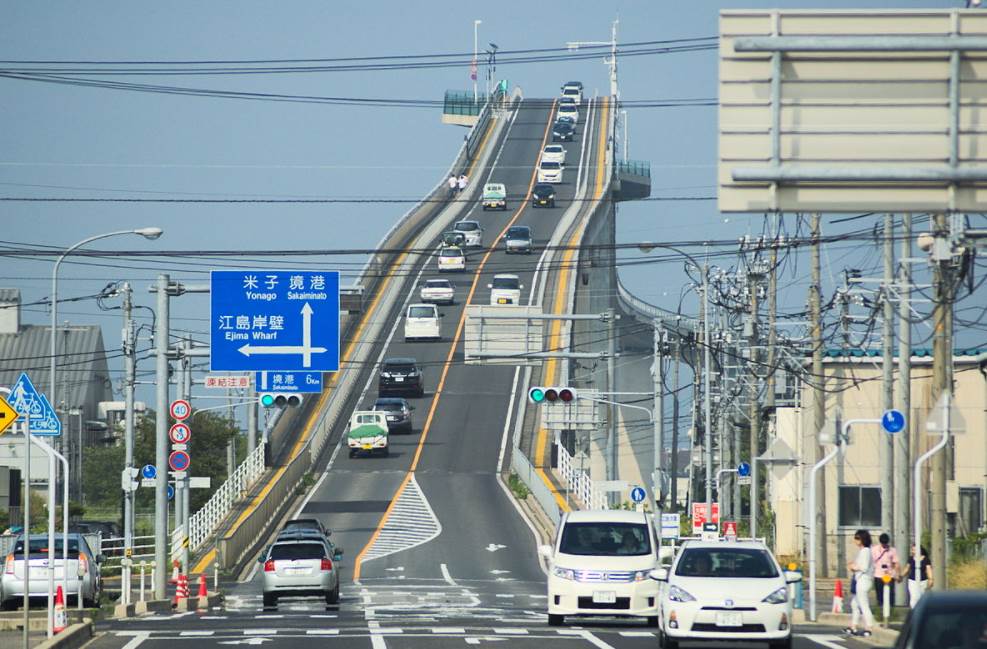
5. Kokonoe Yume Suspension Bridge
The Kokonoe Yume Suspension Bridge is another fascinating bridge in Japan, mainly because of its location and the fact that it’s one of the longest pedestrian bridges in the country (the second-longest to be precise). The bridge has a length of 390 meters (1,279 feet) and reaches a maximum height of 173 meters (568 feet) above the valley floor below.
The bridge offers astounding views of the valley, the Kuju mountain range, and two spectacular waterfalls known as the Shindo no taki and Medaki waterfalls. It’s located on the island of Kyushu in the utmost southwestern part of the country and is one has been one of the most popular tourist attractions in the region since its opening in 2006.
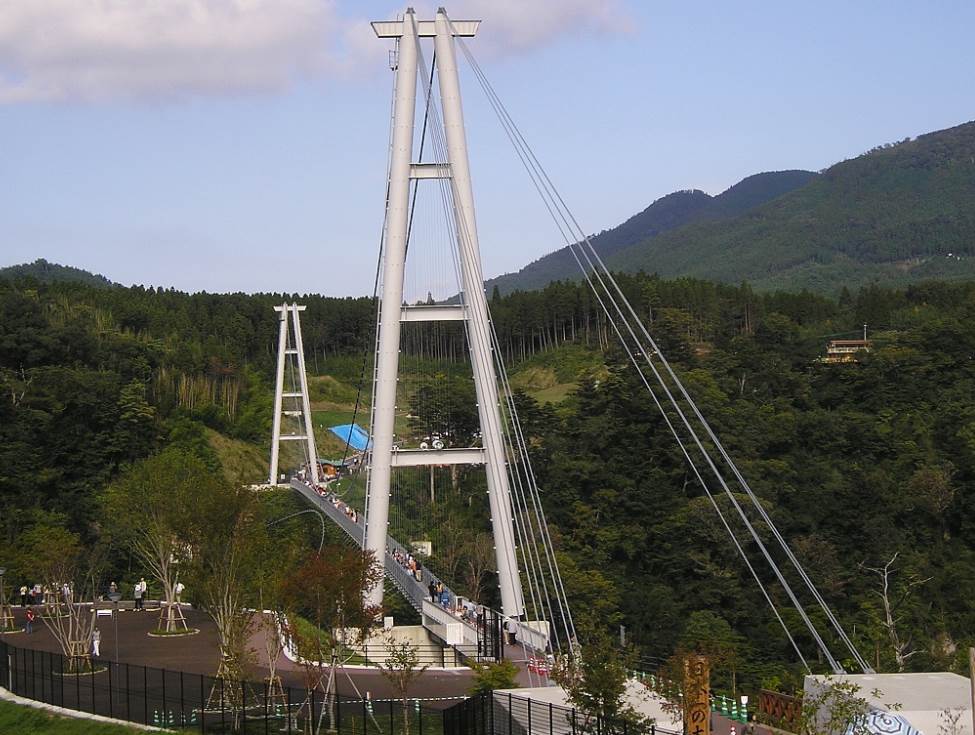
6. Tatara Bridge
The Tatra Bridge is a spectacular cable-stayed bridge and is part of a route that connects the islands of Honshū and Shikoku while spanning the Seto Inland Sea. The bridge opened for traffic in the year 1999 and has a total length of 1,480 meters (4,856 feet).
The most prominent features of the bridge are the two massive towers to which the cables are connected. These towers stand 220 meters (722 feet), making them some of the most fascinating landmarks in Japan. It took over 6 years to complete the bridge and cost well over $600 million back then.
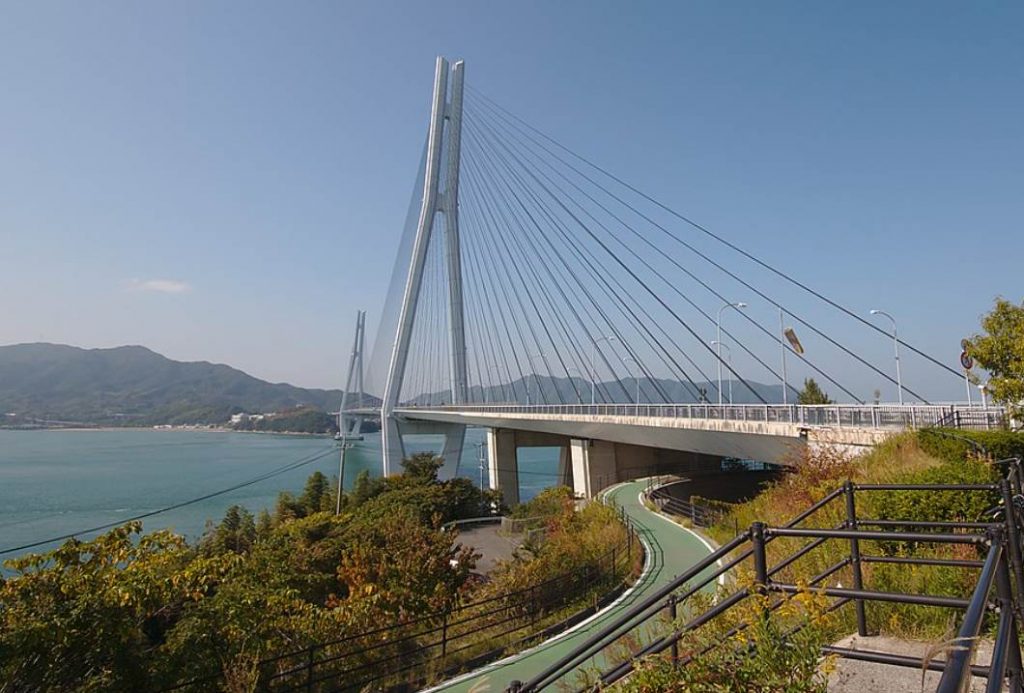
7. Tokyo Gate Bridge
The Tokyo Gate Bridge is an incredible truss cantilever bridge that spans Tokyo Bay in Koto City, a special ward just southwest of the city’s historical center. It has a total length of 2,618 meters (8,589 feet) and a maximum height of 87.8 meters (288 feet) which is quite high for a bridge of this type.
The bridge is an integral part of a newly developed ringway around Tokyo (one of the many) and was completed in the year 2012. It cost an astounding ¥113,000,000,000 to complete, the equivalent of over $1 billion today.
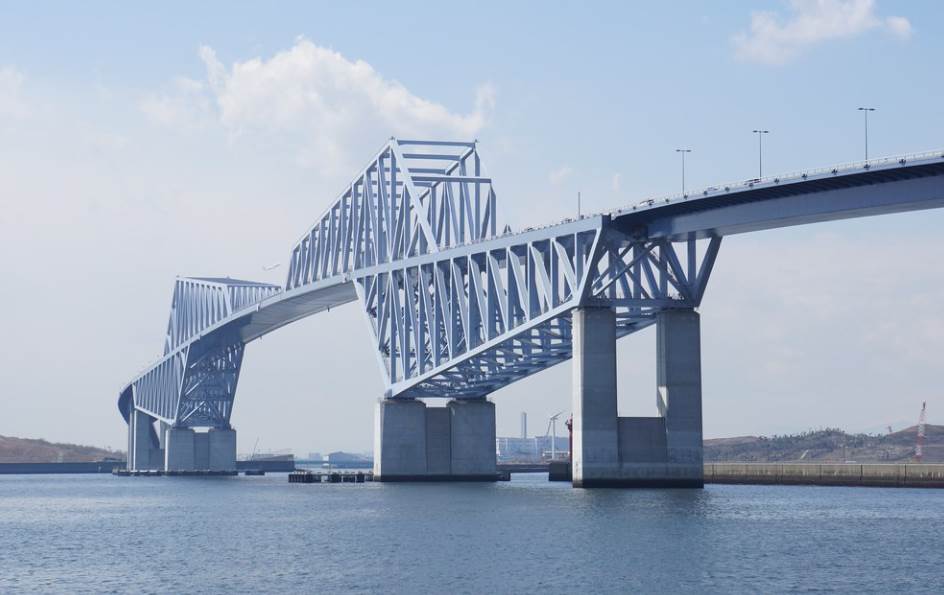
8. Ikitsuki Bridge
The Ikitsuki Bridge is a similar type of bridge to the Tokyo Gate Bridge with the difference that it consists of a continuous truss. This means that it doesn’t extend with the use of hinges or joints. It connects the city of Ikitsuki with Hirado island in the utmost southwestern part of Japan.
Its main span has a total length of 400 meters (1,300 feet) which makes it the longest continuous truss bridge in the world. It surpassed the Astoria-Megler Bridge in Oregon in 1991 a similar structure that held the record between 1966 and 1991 with a length of 376 meters (1,232 feet).
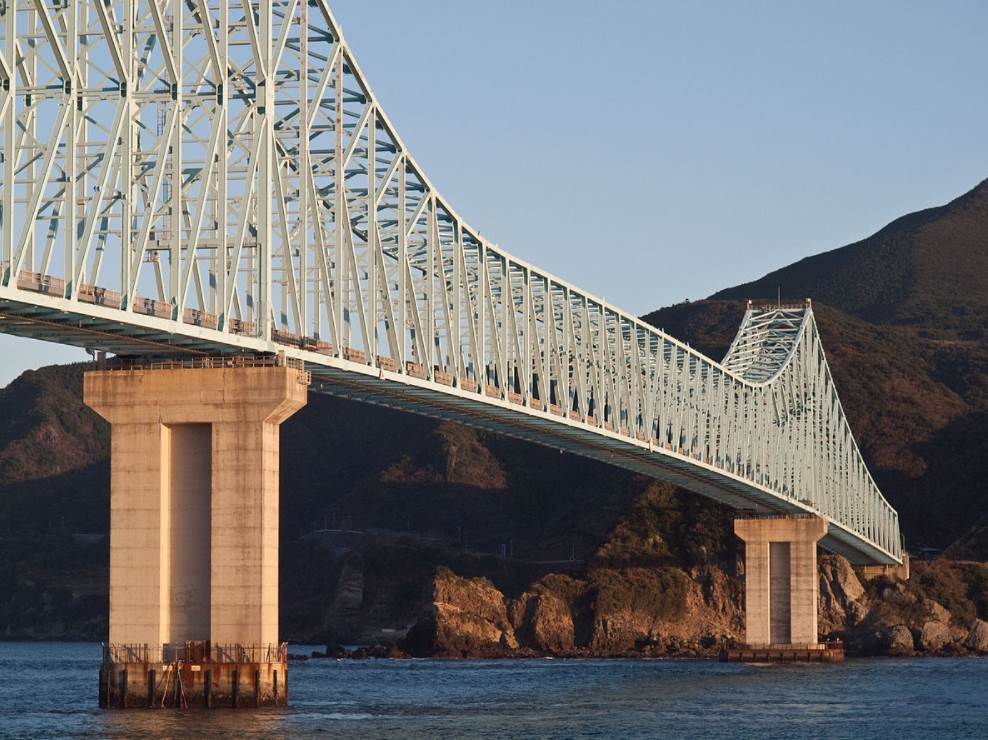
9. Megane Bridge
Megane Bridge or “Meganabashi” as it’s known locally has been nicknamed “Spectacles Bridge.” That’s because of the simple fact that the two arches of this stone arch bridge resemble a pair of spectacles. It spans the Nakashima River and is located in the city of Nagasaki on the island of Kyushu in the southwestern part of Japan.
As you surely expected, this small stone bridge is another historic bridge that dates back to the year 1634. It’s presumably one of the oldest stone bridges in Japan. This is remarkable because a devastating storm washed away just about all the other stone bridges in this city. All the stones of the Megane Bridge were retrieved and the bridge was completely rebuilt with the 17th-century stones.
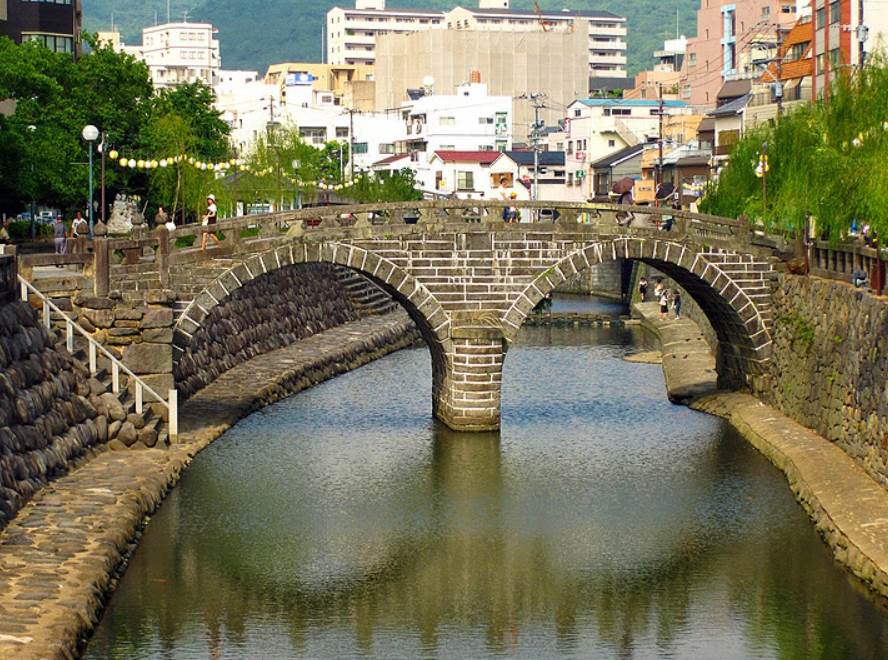
10. Mishima Skywalk
The Mishima Skywalk is the common name of a pedestrian bridge that is officially known as the “Hakone Seiroku Mishima Suspension Bridge.” This bridge spans a valley located near the rim of Mount Hakone, a large volcano just southeast of Tokyo.
The bridge is located just northeast of Mishima, a city not too far to the southeast of the immense Tokyo metropolitan area. It has a length of 400 meters (1,312 feet) which makes it the longest pedestrian bridge in Japan. The main reason why its one of the most popular tourist attractions in the region since 2015 is because it provides astounding views of both Surima Bay and Mount Fuji.
